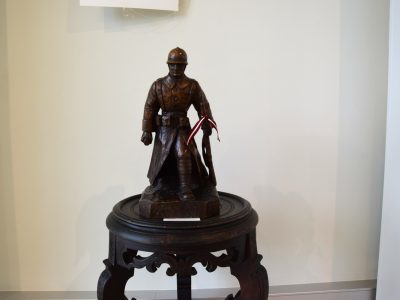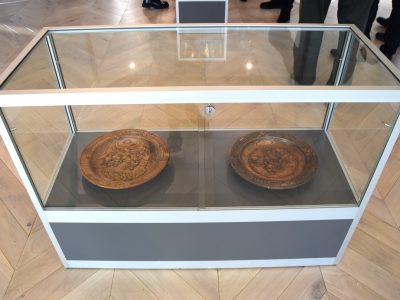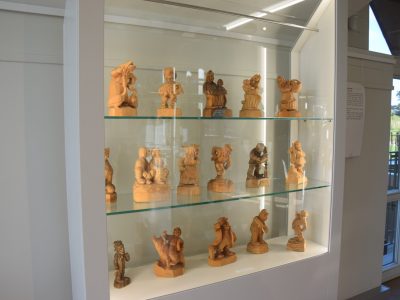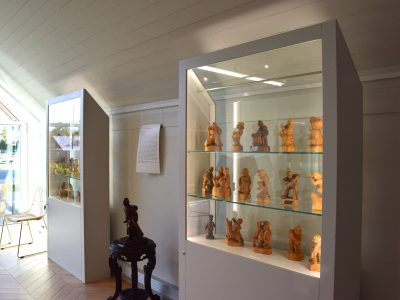On October 6, a new exhibition – “Wood sculpture in Latvia in the 20th century” was opened in the White Hall on the second floor of the “Treasure House of the Free State” exhibition house, which allows anyone interested to take a look at the works of Latvia’s most prominent woodcarvers of the last century.
The exhibition reveals how woodcarving has developed over the decades, what trends have prevailed in artistic circles, and how woodcarvers have created woodcarving traditions from the time of Latvia’s 1st independent state until the restoration of independence in 1991.
During the Soviet years, wood sculpture and wood as a material took a prominent place in Latvian visual arts, many of our wood sculptors have received praise from their compatriots, as well as medals and diplomas at foreign exhibitions. Many household items, such as wooden dishes (plates, beer cups, etc.), were richly decorated with ornamental wood carvings and later given as gifts on beautiful holidays and anniversaries, thus until the very recent past they could be found in almost every house in Latvia. Time passes, traditions change, and such works of art of our ancestors can mostly be found only in museums and private collections of collectors.
In the exhibition “Woodworking in Latvia in the 20th century” a total of 146 works of well-known woodcarvers can be seen, which were donated by collectors Andris Plostiņš, Gunārs Kuškis, Valērijs Tikhonovs, Jānis Žugovs and Jānis Vigups from their private collections to be displayed in the “Treasure House of the Free State”. The largest part of the exhibition consists of wooden sculptures with different themes – artists mostly reflect in their works what they see around them, or the most vivid childhood memories, so in the sculptures we can see both representatives of various professions (musician, shepherd, farmer, teacher, etc.) and festive themes (Līgo), and characters from fiction (the Kaudzīs brothers’ novel “Mērnieku laiki”), depictions of nature and the animal world, as well as works in which the authors satirically touch on human vices (alcoholism, hooliganism, gossip, etc.). Each artist has his own handwriting left on the tree and favorite themes of his work, but all are united by the love of wood as a grateful material for creation and the desire to create art that inspires and makes you think.




